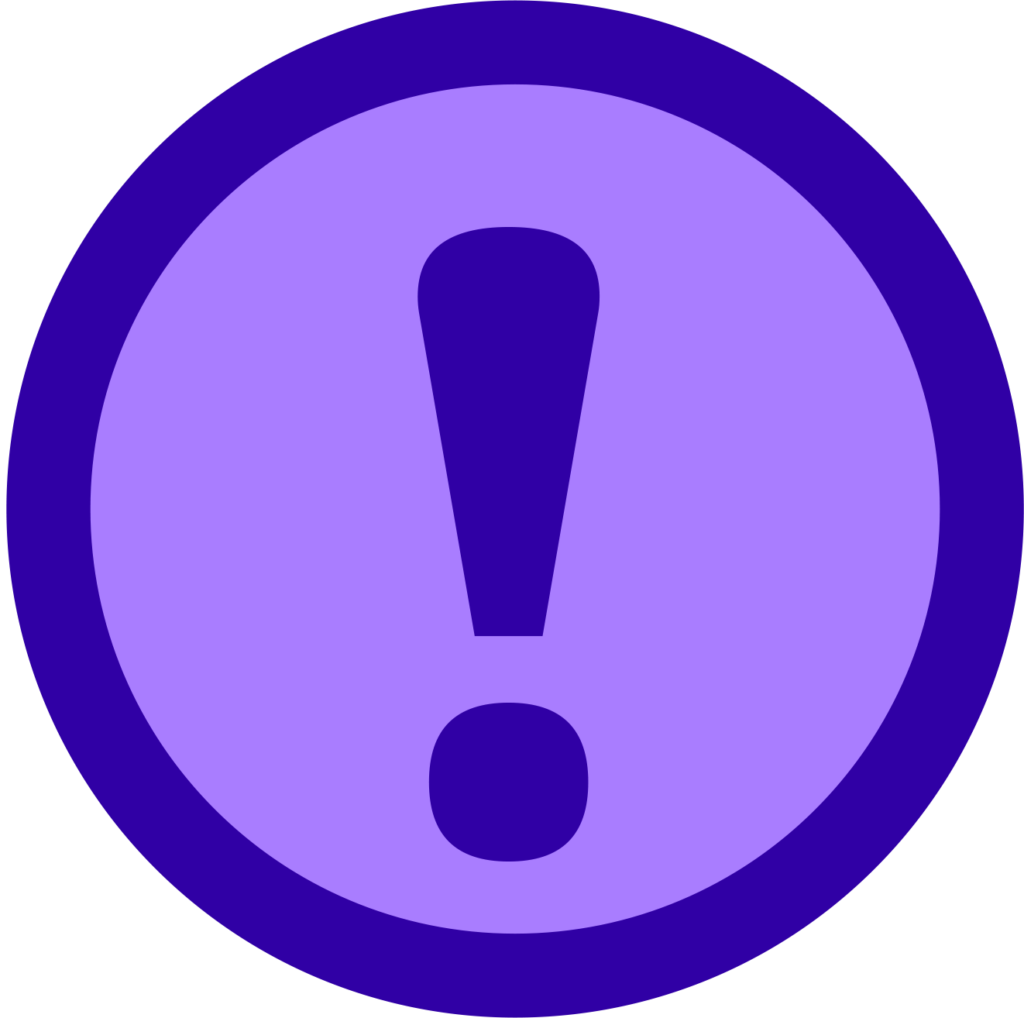There are three punctuation marks that come at the end of a sentence: the period ( . ), the question mark ( ? ), and the exclamation point ( ! ). A sentence is always followed by a single space, no matter what the concluding punctuation is.
Periods
 Periods indicate a neutral sentence, and as such are by far the most common ending punctuation mark. They’ve been at the end of every sentence on this page so far. They occur at the end of statements.
Periods indicate a neutral sentence, and as such are by far the most common ending punctuation mark. They’ve been at the end of every sentence on this page so far. They occur at the end of statements.
Question Marks
 A question mark comes at the end of a question (How was class today?). A rhetorical question is asked to make a point, and does not expect an answer. Some questions are used principally as polite requests (Would you pass the salt?).
A question mark comes at the end of a question (How was class today?). A rhetorical question is asked to make a point, and does not expect an answer. Some questions are used principally as polite requests (Would you pass the salt?).
All of these questions can be categorized as direct questions, and all of these questions require a question mark at their ends.
Indirect Questions
Indirect questions do not have question marks at their ends. They can be used in many of the same ways as declarative ones, but they often emphasize knowledge or lack of knowledge:
- I can’t guess how Tamika managed it.
- I wonder whether I looked that bad.
- Cecil asked where the reports were.
Notice how different word order is used in direct and indirect questions: in direct questions the verb usually comes before the subject, while indirect questions the verb appears second.
Exclamation Points
 The exclamation point is a punctuation mark usually used after an interjection or exclamation to indicate strong feelings or high volume, and often marks the end of a sentence. You’ve likely seen this overused on the internet.
The exclamation point is a punctuation mark usually used after an interjection or exclamation to indicate strong feelings or high volume, and often marks the end of a sentence. You’ve likely seen this overused on the internet.
While this kind of statement is excessive, there are appropriate ways to use exclamation points. A sentence ending in an exclamation mark may be an exclamation (such as “Wow!” or “Boo!”), or an imperative (“Stop!”), or may indicate astonishment: “They were the footprints of a gigantic duck!”
The exclamation mark is sometimes used in conjunction with the question mark. This can be in protest or astonishment (“Out of all places, the water-hole?!”).
Informally, exclamation marks may be repeated for additional emphasis (“That’s great!!!”), but this practice is generally considered only acceptable in casual or informal writing, such as text messages or online communication with friends and family.
Practice
Are ending punctuation marks used appropriately in these sentences? Explain why or why not. The sentences have been numbered to aid in your comments:
(1) One famous eighteenth-century Thoroughbred racehorse was named Potoooooooo, or Pot-8-Os! (2) He was a chestnut colt bred by Willoughby Bertie, 4th Earl of Abingdon, in 1773, and he was known for his defeat of some of the greatest racehorses of the time. (3) With a well-to-do background like this, where do you suppose his strange name came from.
(4) The horse once has a stable lad, who facetiously misspelled Potatoes. (5) Apparently, the owner thought the misspelling was funny enough to adopt it as the horse’s real name!
Punctuation Clusters
Occasionally, you’ll come across an instance that seems to require multiple punctuation marks right next to each other. Sometimes you need to keep all the marks, but other times, you should leave some out.
You should never use more than one ending punctuation mark in a row (period, question mark exclamation point). When quoting a question, you would end with a question mark, not a question mark and a period. If an abbreviation, like etc., ends a sentence, you should only use one period.
- Carlos leaned forward and asked, “Did you get the answer to number six?”
- I think we’ll have enough food. Mary bought the whole store: chips, soda, candy, cereal, etc.
However, you can place a comma immediately after a period, as you can see above with etc. This rule also applies to the abbreviations e.g. and i.e.
Periods and parentheses can also appear right next to each other. Sometimes the period comes after the closing parenthesis (as you can see earlier in this section), but sometimes it appears inside the parentheses. (This is an example of a sentence where the period falls within the parentheses.) We’ll learn more about this in Text: Brackets, Parentheses, and Ellipses.
Practice
Identify punctuation errors in the following sentences. Type the corrected sentences in the text frame below:
- Dana had a lot of skills: reading, writing, note-taking, listening, etc..
- My sister looked over and asked, “Why do you have so many grapes in the shopping cart?.”
- Lucinda was the reigning Spring Queen (i.e. she had won the student vote at the last spring dance).
Candela Citations
- Text: Periods, Text: Punctuation Clusters. Authored by: Lumen Learning. License: CC BY: Attribution
- Original Icons. Provided by: Lumen Learning. License: CC BY: Attribution
- Revision and Adaptation of Wikipedia content. Provided by: Lumen Learning. License: CC BY-SA: Attribution-ShareAlike
- Question. Provided by: Wikipedia. Located at: https://en.wikipedia.org/wiki/Question. License: CC BY-SA: Attribution-ShareAlike
- Content clause. Provided by: Wikipedia. Located at: https://en.wikipedia.org/wiki/Content_clause#Interrogative_content_clauses. License: CC BY-NC-SA: Attribution-NonCommercial-ShareAlike
- Exclamation mark. Provided by: Wikipedia. Located at: https://en.wikipedia.org/wiki/Exclamation_mark. License: CC BY-SA: Attribution-ShareAlike
- Modification of Potoooooooo (errors added). Provided by: Wikipedia. Located at: https://en.wikipedia.org/wiki/Potoooooooo. License: CC BY-SA: Attribution-ShareAlike